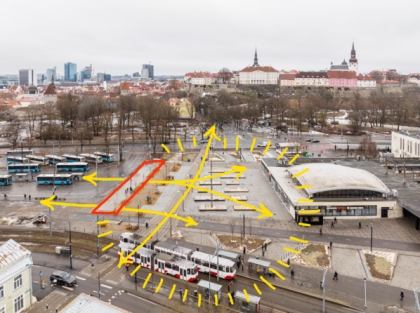
© TAB
|
пресс-релиз:
Here we are
We live in unprecedented times, arguably, and yet we carry on with our everydays. Between romanticised pasts and utopian futures, this Open Call explores the agile qualities of architecture – collaborative authorships, regenerative design, non-linear construction processes, direct action – that take inspiration from the everyday. ‘For this situation’ derives directly from the latin ad hoc, referring to the alternative practices of planning, preparing, building, maintaining, and dismantling an architectural project that respond to their immediate context. For today’s needs, with today’s means.
To build, not to build, how to build?
Resources are scarce – or are they? With the increasing attention to lowering construction industry’s carbon footprint, big business seems to be shifting its focus – circular construction, adaptive reuse and biogenic materials seize to be a niche. This is a positive tendency, until they become a technocratic solution, numbed with numbers, inflexible in Excel sheets and flattening resourceful creativity, only to further extract materials, skills and labour.
In light of this critical note, we want to offer room for inventions that stem from togetherness and enchantment of being humanly agile, open to trial and error, on-site decision-making, as we go. With this competition, we want to celebrate creative endeavours that are not (yet) formalised – informal methods, naive creativity and quests that don’t rely on future promises, but on available resources today.
Make Do with capital letters
This situation requires agile solutions. What opportunities lie in alternative practices that shape resilient architecture? For this competition, we seek critical, clever and creative proposals that put regenerative architecture in the forefront. How to plan a design process with materials yet to be harvested from demolition sites, leftovers or overlooked resources? With whom to engage with if making things is a collective effort? What does architecture look like if it is not shaped as a finite object but as a performative act of maintenance, care and repair? How can we plan extensions or dismantling for future use, and how does this manifest in details, joints and materiality? If these or similar questions are at the heart of your practice then we would like to hear about your ideas!
What
Tallinn Architecture Biennale has been bringing contemporary ideas to the architectural discourse since its inception in 2011. With this year’s 2-stage Installation Competition, we wish to continue this path, by firstly formulating an ambitious thesis in the form of a conceptual proposal, and secondly, constructing a real scale design fragment of it. After the biennale, the project will be considered for a full scale public design project by Tallinn city government.
For the final design proposal the brief asks for an urban break space in Tallinn that offers shelter from weather and a waiting area for buses, trains, trams. It should be robust to withstand the seasons and public use, while offering spatial qualities to the area. How these qualities manifest in conjunction with the larger vision of regenerative design is up to the participants to imagine and propose.
- The first stage looks for a vision. How to design public architecture regeneratively? What could be the methods, materials, aesthetics for it?
- The second stage invites 10 shortlisted teams to develop their vision further as a design project for a public shelter in Tallinn Baltic Station.
- For TAB 2024, a 1:1 mock up of a fragment of the winning design will be built on the site.
- This real scale design fragment will form a base for a participatory process, design improvement and further detailing with the aim of a full construction in 2026.
|